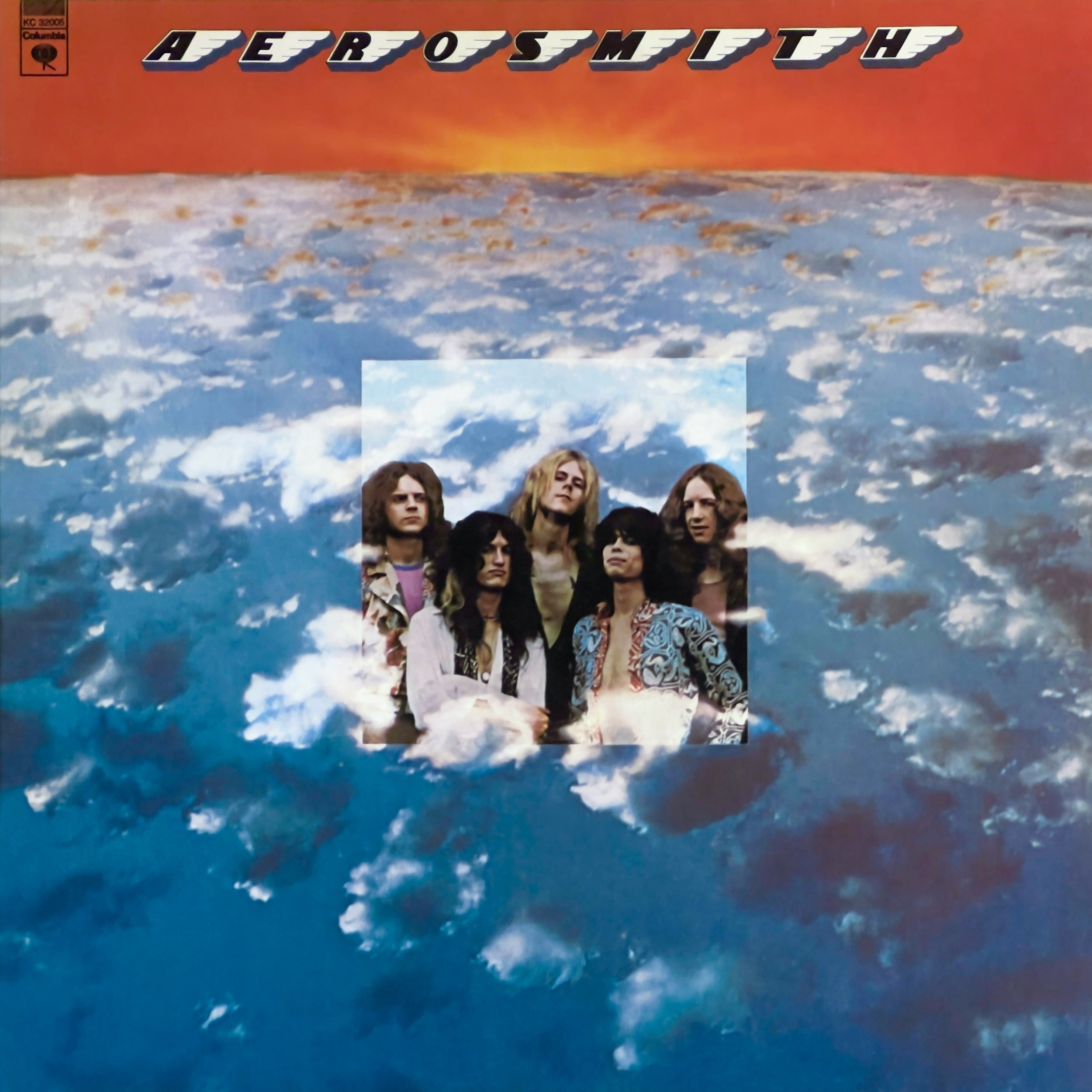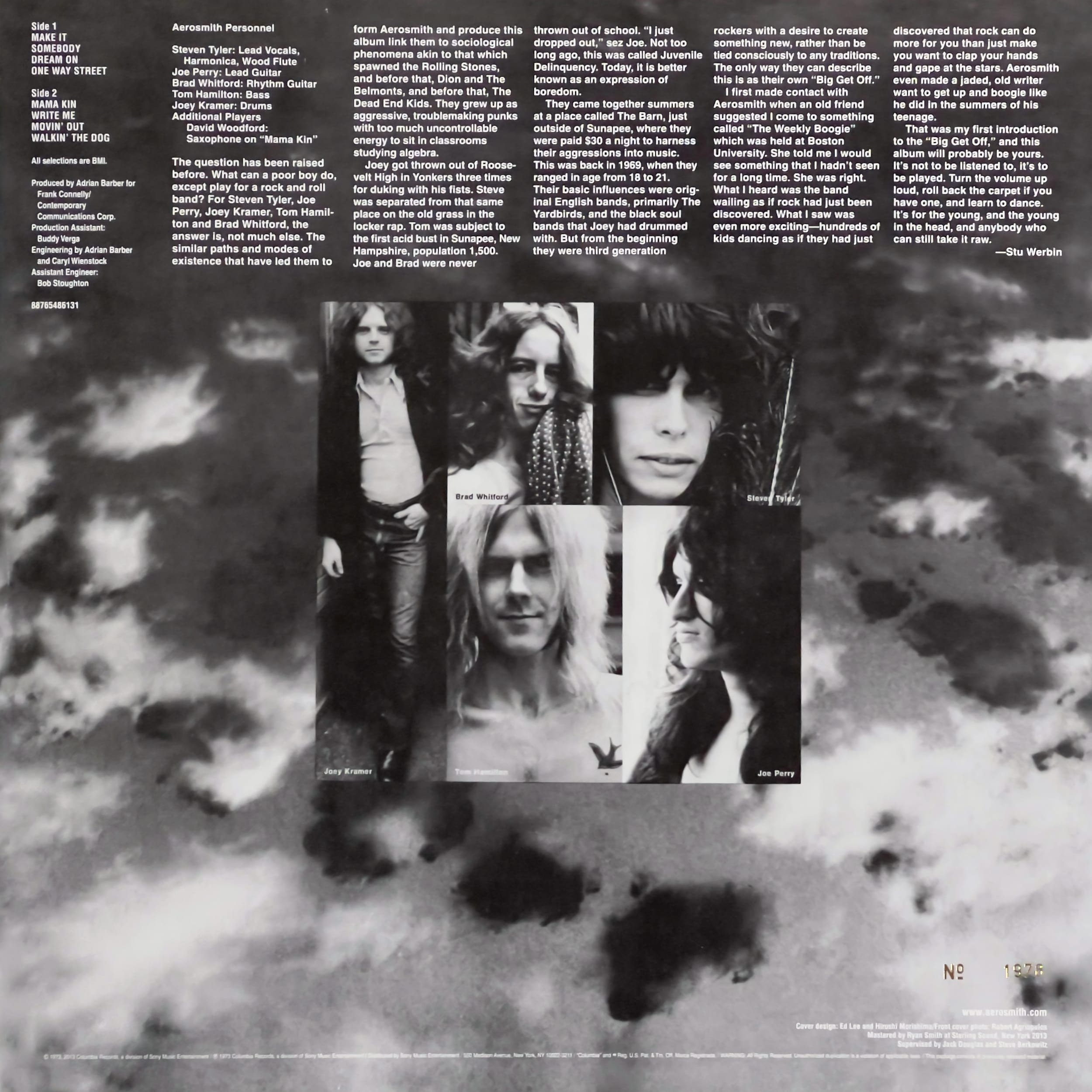Released in 1973, Aerosmith’s eponymous debut is, in retrospect, somewhat of an anomaly as it is arguably more unique than any other album in their illustrious career. While Aerosmith would hit their stride, and greater success with Get Your Wings (1974) and Toys In The Attic (1975), the self-titled Aerosmith would see Steven Tyler sing in a faux blues vocal style that has often been referred to as being closer to Kermit the Frog than Tyler’s intended mimicry of traditional blues singers. Yes, dear reader, once you’re made aware of the Kermit reference, it’s difficult to un-hear the correlation but, if nothing else, it offers a unique perspective.
Naturally controversial, especially upon reflection, not all of the songs on Aerosmith would be sung in this style for Dream On is delivered beautifully in Tyler’s natural range. That isn’t to say his faux-styling is distracting, for I rarely recognise it and accept that this debut, while a little rough around the edges, is arguably perfect with a series of songs, with catchy hooks, that blend well together and have in most cases stood the test of time.
What isn’t controversial is just how good the 2013 Record Store Day vinyl remaster is. Mastered by Ryan Smith at Sterling Sound, this release sounds amazing. While the Hi-Res Lossless Apple Music stream, an Apple Digital Master, is beautiful in its own right, the vinyl re-issue is slightly more fluid in its delivery with the same level of detail that is present in the digital stream. The fullness of sound that is a vinyl trademark certainly plays a role here and helps the album to really shine, thereby making it more personable and allowing you to become further immersed in the music. Of course, these are not night and day differences and are only apparent when comparing releases.
The record itself comes housed in a high quality, clear (with a pink hue), anti-static sleeve and is flat and heavy. While 180-gram vinyl isn’t an indication of quality, despite marketing to the contrary, this pressing has a significantly low noise floor thereby allowing the music to be at the forefront of the experience.
As it pertains to the reproduction of the album artwork, this reissue is a solid facsimile. It isn’t an exact match, as other artist reissues have aimed to be, but it is close enough that most fans will be thoroughly happy with the release. These particular pressings were also numbered and I’m fortunate to have number 1978 of 5000, but the same mastering has been available for years since this release was issued; sans the pressing number. If only I had gotten number 1973, I would have been in Aerosmith heaven. Although, given the impressive quality of the pressing, I’m already there.
Make It is raw to the bone with a killer guitar twang. While it hasn’t always been my favourite song on the album, it has grown on me to such an extent that if I consider this early recording as being done by a garage band, with a live club performance feel, then it is extraordinary.
For those who wished for a little more production value, Aerosmith did re-record Make It in 2007 for release on Guitar Hero: Aerosmith. This re-recording is interesting and certainly, from a musical perspective, offers a little more spit and polish, but Tyler’s vocals aren’t great on the re-recording and in all honesty, whenever I hear this edition, I’d prefer to put on the original. It isn’t readily available, but a quick search on YouTube will allow you to hear it.
Regardless of which version you end up preferring, Make It is one of those underrated songs that should be included in every inspirational playlist for we all want to make it in whatever we do.
Somebody has a country-rock vibe that borders on rockabilly. As solid as Somebody is on Aerosmith, the recording as heard on 1971: The Road Starts Hear is significantly better. Not only are Tyler’s vocals more natural, but the band is on fire with some killer playing that simply didn’t make it to the studio recording.
It’s also the first time on the album that we hear Aerosmith’s trademark cowbell. The inclusion matches the music perfectly and is as welcome as Tyler’s harmonica; both helping to define that signature Aerosmith sound.
Dream On is the power ballad to end all power ballads. While it didn’t chart well upon release, a re-release in 1975 took it to the top of the charts. Despite being played ad nauseam, I never tire of Dream On as it’s the standout on this eponymous release if for no other reason than it features Tyler’s natural singing voice.
As one of Aerosmith's most popular songs, it stands to reason that it’s been played extensively in their live performances. Of the live versions available, the edition on Live! Bootleg is an absolute masterpiece. The performance on A Little South Of Sanity is pure bliss for it doesn’t change the fundamentals of the song but adds more filler thereby making it a great rendition. While the Classics Live! recording is adequate, if you were hearing this edition for the first time you’d likely wonder what all the fuss was about. That, however, doesn’t set you up for the horrendous live recording that is featured on the Last Action Hero soundtrack. Seriously, what were they thinking about allowing this version to go out? I’m not opposed to the symphonic elements, but the band sound as if they’re bored and just couldn’t have been bothered. Even Perry’s solo is sloppy and uninteresting.
What isn’t sloppy, however, is the cover by Ronnie James Dio & Yngwie Malmsteen on A Salute To Aerosmith. Dio is a vocal god, but it is Malmsteen’s guitar work that is otherworldly and should put Joe Perry to shame. Even as incredible as the performance by Tyler and Perry, with the Southern California Children’s Chorus is, it doesn’t match the Dio/Malmsteen recording.
If you’re interested in how music can be interpreted across genres, you’ll likely enjoy Eminem’s Sing For The Moment as the master of hip-hop/rap sampled the song superbly thereby introducing an entirely new audience to the music of Aerosmith in a manner similar to the Aerosmith/Run-DMC version of Walk This Way.
One Way Street introduces that trademark harmonica and an addictive foot-tapping rhythm. One Way Street is arguably the most underrated song on the album, likely due to its raw but reserved nature, but it is in this element that it becomes a true masterpiece.
Mama Kin kicks the album up a notch with a killer guitar riff and momentarily pauses at just the right time. It’s blues rock and roll at its finest and the inclusion of the saxophones is a subtle but welcome addition.
With regards to the available live recordings, unlike Dream On, the performance on A Little South Of Sanity is a muffled mess, especially where the guitar mix is concerned. That said, Tyler sings it well and I appreciate how he goes in and out of his natural voice and that which he used on the eponymous debut as it offers an interesting contrast. The Live! Bootleg edition isn’t much better, but the Classics Live! recording is somewhat redeemable but it’s nowhere near as good as the Guns N’ Roses’ cover on G N’ R Lies.
Write Me (A Letter) is a solid rock and roll tune. While it hasn’t been performed extensively, the performance from Boston in Nov. 1976, as featured on Pandora’s Box is, in my opinion, superior to the studio recording as it’s a little more rock and roll with a greater sense of energy and band synergy.
Movin’ Out starts with yet another classic Perry guitar riff that sets the tone for the song and is most notable for being the first song penned by Tyler and Perry. It’s one of my favourite tracks on the album with a chorus that belongs in rock and roll heaven. That said, you can tell the band is still finding their sound on this track. I’d love to have them re-record this song to see what they could do with it as it reminds me of a demo tape release; an albeit exceptional one!
The alternate rendition, as heard on Pandora’s Box, has a more solid start than the album version. It’s stripped back with an overall simpler mix and recording style thereby making it my preferred version of the song.
The live recording, as featured on Classics Live! II, focuses strongly on Joey Kramer's drum beat and Tom Hamilton’s bass accompaniment thereby making it a killer recording and one worth checking out if you haven’t already heard it.
Walkin’ The Dog is an awesome bluesy rock and roll standard that has been covered extensively. While Aerosmith performs it well, with an interesting introduction that includes the use of the Wood Flute, it is amongst the best covers of Rufus Thomas’ original, more pop-focused, hit. Many fans would be familiar with The Rolling Stones cover and in comparison to Aerosmith’s it’s less rock and roll and more closely aligned with the original song, including some of the quirkiness from the original tune.
Overall, Aerosmith’s eponymous debut is a must-own for any Aerosmith fan, even those who prefer their latter highly polished releases, but if you’re remotely interested in blues-inspired rock and roll, with a rough-around-the-edges feel to it, you’ll love this album.





